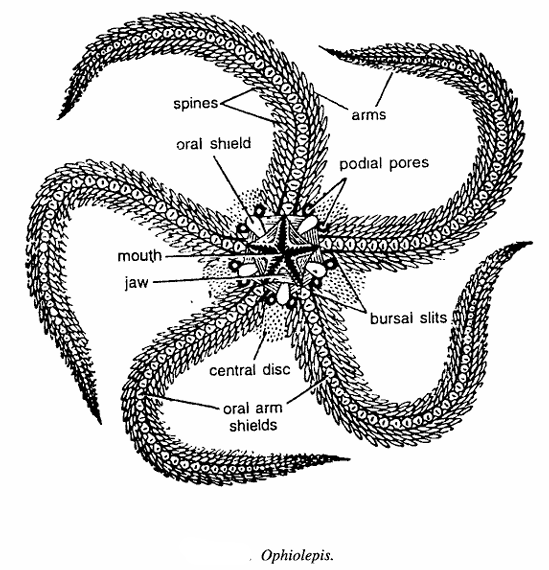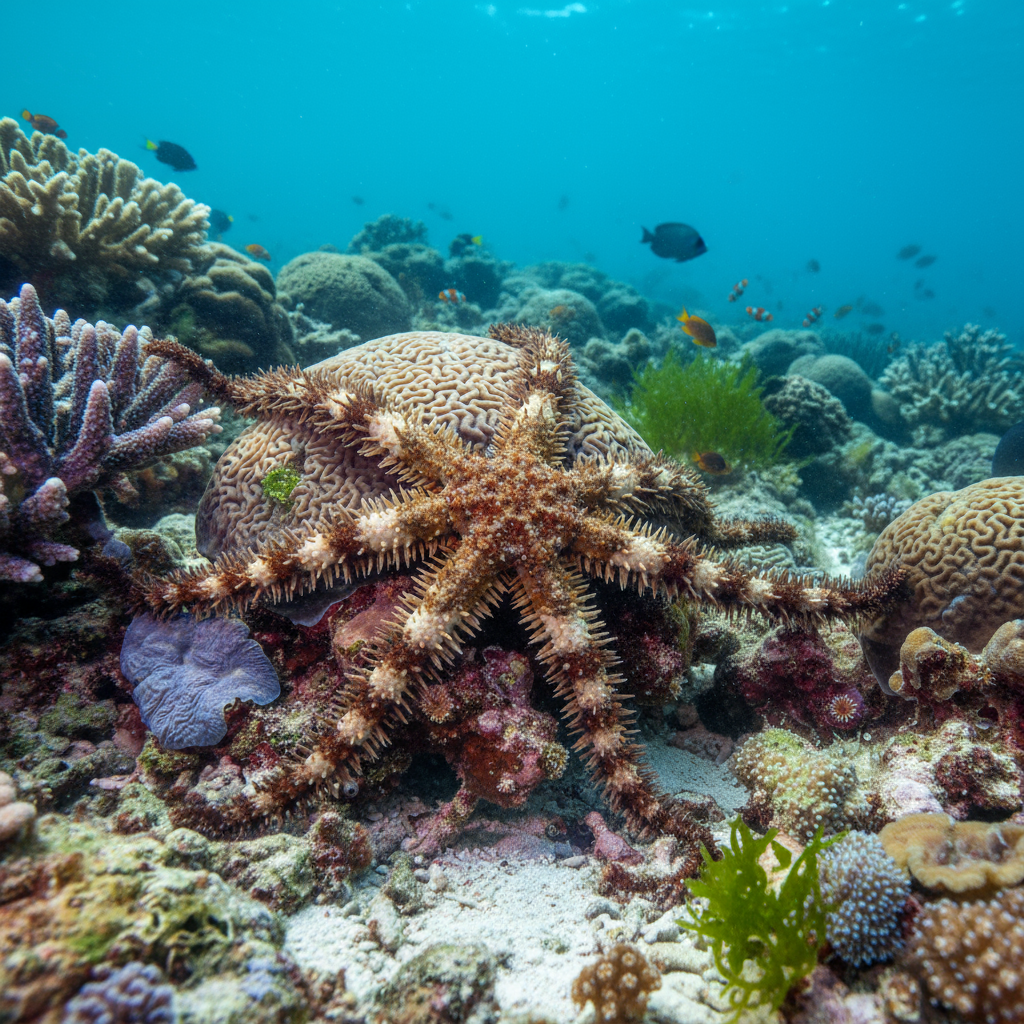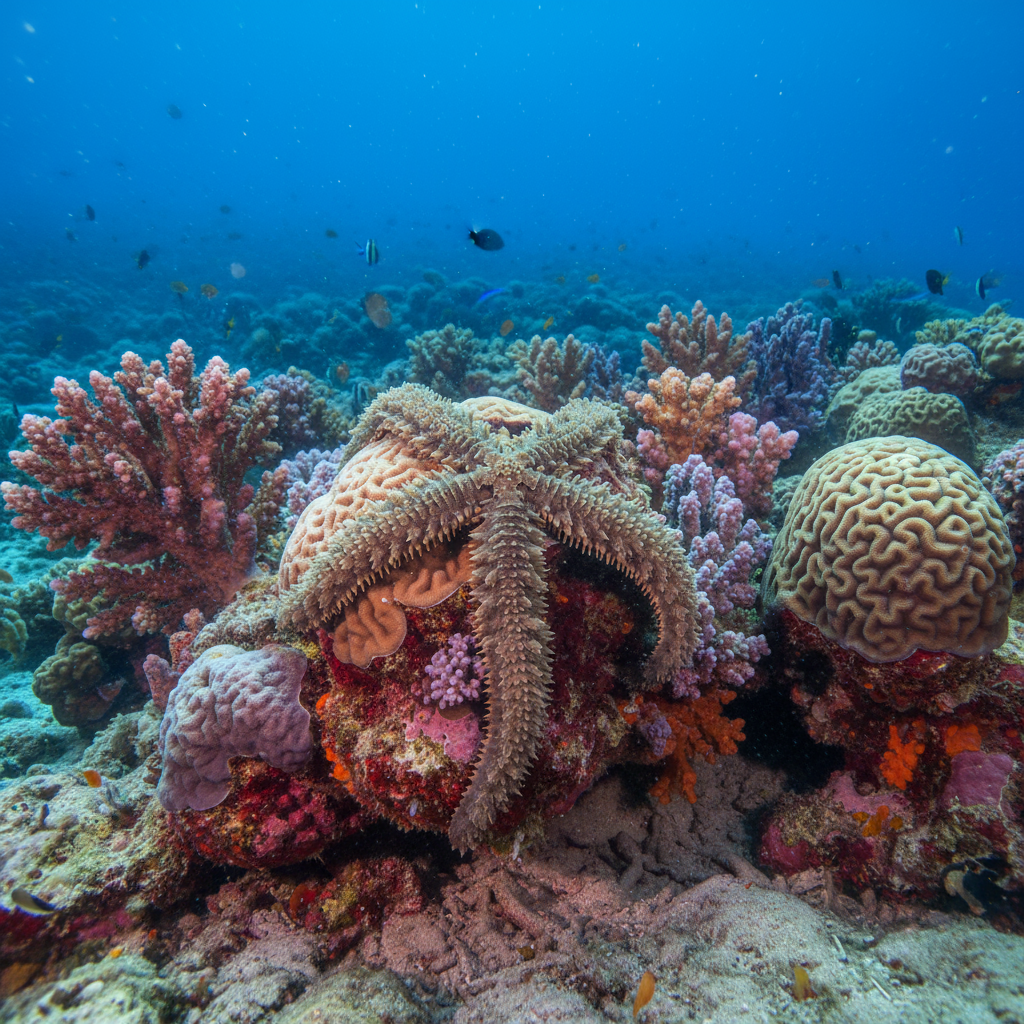Ophiolepis: A Detailed Study on Morphology, Classification, Habitat, Behavior, Reproduction, and Ecological Significance
Ophiolepis is a genus of brittle stars belonging to the family Ophiolepididae within the class Ophiuroidea of phylum Echinodermata. These marine invertebrates are characterized by their slender, flexible arms and a distinct central disc. Ophiolepis species are typically found in tropical and subtropical marine habitats worldwide, especially associated with coral reefs and rocky substrates. Their intriguing morphology, behaviors, and ecological roles make them significant in marine biodiversity and ecosystem functioning.
Classification of Ophiolepis
| Taxonomic Rank | Name | Characteristics |
|---|---|---|
| Kingdom | Animalia | Multicellular eukaryotic marine organisms |
| Phylum | Echinodermata | Marine animals with pentaradial symmetry and calcareous endoskeleton |
| Class | Ophiuroidea | Brittle stars with articulated, whip-like flexible arms |
| Order | Ophiurida | Brittle stars with distinct central disc and flexible arms |
| Family | Ophiolepididae | Brittle stars with scales on discs and arms |
| Genus | Ophiolepis | Slender-armed brittle stars typically found in tropical reefs |

Habitat and Habit
Ophiolepis species frequently inhabit coral reefs, rocky seabeds, and sandy or muddy coastal zones primarily in tropical and subtropical regions. They exhibit nocturnal activity patterns, hiding in crevices, under rocks, or within coral rubble during the day to avoid predators. Their flexible arms enable swift crawling across substrates to forage for small invertebrates, detritus, and organic particles.
Geographical Distribution
The genus Ophiolepis has a broad distribution in tropical and subtropical marine waters globally, including the Indo-Pacific region, Red Sea, Western Atlantic, and Caribbean Sea. Species have been documented from shallow intertidal zones to deeper waters, exhibiting adaptability to various benthic substrates and environmental conditions.

General Characteristics
- Commonly called as Brittle stars.
- Oral and aboral surfaces well differentiated. Central disc and arms quite distinct.
- Arms contain podia. Mesodermal endoskeleton consits of calcareous ossicles.
- Central disc of aboral surface is composed of radial shield, lateral arms shield, aboral shield, central plate and primary concentric plates.
- Central disc has primitive concentric arrangement of plates. Branchial, dermal papillae and pedicellarea are absent.
- Body Form: A pentagonal central disc with distinct scales and granules on the aboral surface.
- Arms: Five long, slender, articulated arms with overlapping scales and small spines aiding locomotion and defense.
- Coloration: Varies from brown and gray shades to subtle patterns aiding camouflage within reefs.
- Oral Structures: Mouth located on the underside of the disc, surrounded by jaws equipped with denticulate plates.
- Tube Feet: Small, primarily sensory, assisting in food handling and environmental detection.
- Skeleton: Comprised of calcareous ossicles forming protective plates and spines on disc and arms.
Special Features
Ophiolepis species exhibit notable regenerative capabilities, efficiently regenerating lost arms, a vital survival adaptation in predator-rich reef environments. They also possess enhanced sensory adaptations for detecting food and potential threats.
Their feeding behaviors include suspension feeding, scavenging, and active predation on small benthic invertebrates. The genus displays interesting behavioral traits such as arm autotomy (self-amputation) to evade predators.

Behavior and Ecology
Ophiolepis brittle stars are predominantly nocturnal, using their arm flexibility for rapid movement and concealment. Their role as scavengers and predators helps regulate benthic invertebrate populations and contributes to nutrient recycling.
Their presence enhances reef ecosystem health, and their movements aid in sediment aeration and microhabitat formation beneficial to other marine organisms.
Reproduction and Life Cycle
Ophiolepis reproduces sexually via external fertilization where males and females release gametes into the water column. The bipinnaria larvae are planktonic, drifting before settling and metamorphosing into juveniles.
Some species within the genus may exhibit forms of asexual reproduction or fission, although sexual reproduction predominates. Their regenerative ability allows continued survival and reproduction after arm loss.
Ecological Importance
By fulfilling the role of both predator and scavenger, Ophiolepis brittle stars maintain benthic ecosystem balance, assist in organic matter breakdown, and contribute to coral reef biodiversity. Their sensitivity to environmental changes makes them valuable bioindicators for reef health assessment.
References
- https://en.wikipedia.org/wiki/Brittle_star
- https://www.sealifebase.se/country/CountrySpeciesSummary.php?c_code=450&Genus=Ophiolepis&Species=superba
- https://pmc.ncbi.nlm.nih.gov/articles/PMC8652419/
- https://zookeys.pensoft.net/article/3190/
- https://pmc.ncbi.nlm.nih.gov/articles/PMC3689063/
- https://en.wikipedia.org/wiki/Ophiactis_savignyi
- https://animaldiversity.org/accounts/Ophiopholis_aculeata/
- https://www.digitalatlasofancientlife.org/learn/echinodermata/ophiuroidea/
- https://lkcnhm.nus.edu.sg/app/uploads/2017/06/S34rbz619-626.pdf

